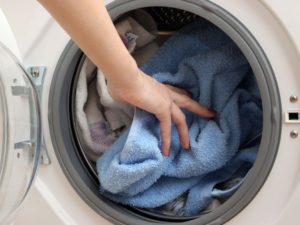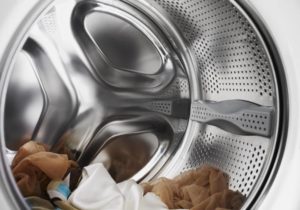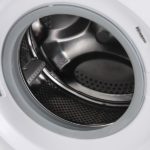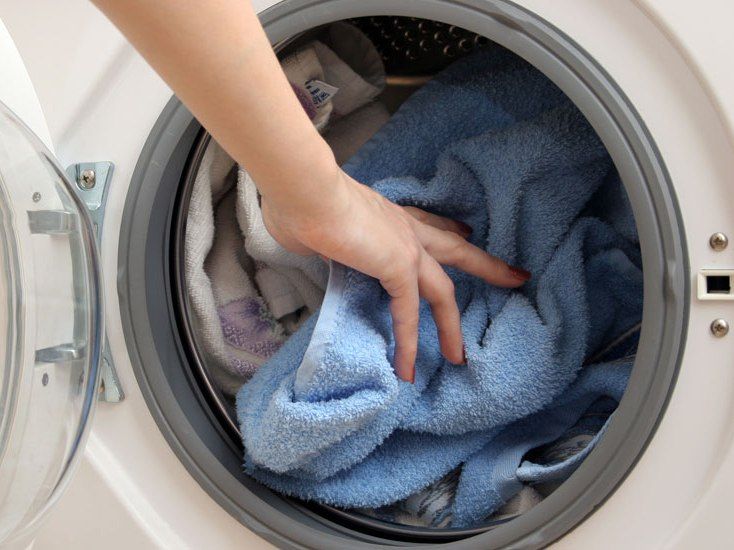Which spin class is better in a washing machine?
A washing machine is a complex piece of equipment found in almost every home. There are models where the washing program is set by the user himself. There are machines where the settings are already set and cannot be changed. In the second case, the buyer needs to know the decoding of the letter and digital indicators designated by the manufacturer.
The main functional feature of the machines is considered to be the drying or spinning mode, which makes the work easier for many housewives. They do not need to wring out heavy bedspreads or duvet covers and involve their household members in this task, as was the case before. Now this work is assigned to washing machines.
The content of the article
Spin classes in the washing machine
 Modern models allow you to remove clothes after washing in an almost dry state. From the selected program, conditions are established that allow you to obtain the desired result.
Modern models allow you to remove clothes after washing in an almost dry state. From the selected program, conditions are established that allow you to obtain the desired result.
Class, in other words, drying of clothes, is ensured by slow or fast rotation of the drum. The characteristic is calculated empirically. First, the laundry is weighed before being loaded into the machine. Then she washes it and spins it. The second value is divided by the first and multiplied by 100%.
Varieties of drying classes
There are 7 spin classes in total.They are designated by Latin letters of the alphabet. Modern cars have only four classes: A, B, C and D.
Category "A" — due to the rapid rotation of the drum, the laundry is completely wrung out. The humidity of washed items is less than 50%. This includes machines with the highest possible speed (more than 1000 times).
Class "B" – the humidity of things reaches no more than 54%. The motor spins the drum up to 1000 times per minute.
WITH – from 55 to 63% (from 800 rpm).
D – from 64 to 72% (from 400 rpm).
Categories from "D" to "G" are not used in automatic machines due to the fact that the washed clothes are taken out completely damp and must be wrung out manually. This spin class refers to old-style machines.
 The quality of drying is affected by the number of rotations per minute performed by the drum. The more revolutions, the drier the laundry removed will be. Automatic machines with class “A” or “B” can reach from 1200 to 2000 rpm.
The quality of drying is affected by the number of rotations per minute performed by the drum. The more revolutions, the drier the laundry removed will be. Automatic machines with class “A” or “B” can reach from 1200 to 2000 rpm.
Such models usually have high capacity and standard or large dimensions. Due to the high speed and strong pressing of the laundry against the walls of the tank, although it turns out to be almost dry, ironing it becomes problematic.
Things wrinkle to such an extent that they cannot be ironed without additional moisture. So high speeds are not an indicator of high-quality washing. The machine’s ability to dry clothes at maximum drum rotations increases the cost and is a marketing ploy to attract buyers.
Narrow models are best purchased with low speeds (from 800 rpm). Due to the strong rotation of the drum, the equipment begins to vibrate strongly, especially if there is too much laundry in it or it is laid out unevenly.The same can happen with machines with a load of about 6 kg.
Which spin class is better to choose in a washing machine and why?
 Many modern models have a pre-programmed drying function. The user just needs to sort things, select the installation (synthetics, dark clothes, bed linen, outerwear, etc.) and press the power button. The machine itself knows at what speed to complete the wash. If such a function is not available, the washing program can be configured independently. They differ depending on the type of clothing.
Many modern models have a pre-programmed drying function. The user just needs to sort things, select the installation (synthetics, dark clothes, bed linen, outerwear, etc.) and press the power button. The machine itself knows at what speed to complete the wash. If such a function is not available, the washing program can be configured independently. They differ depending on the type of clothing.
For example, synthetic lightweight fabrics and outerwear should not be washed together. Due to the incorrectly chosen mode, snags or, in the worst case, damage in the form of torn parts of the fabric may appear on synthetic or silk fabrics. Let's consider what conditions are preferable to set for different fabrics.
Cotton
Items made from cotton fabrics are usually washed at a temperature of 40–60 degrees. If they are dark in color and not heavily soiled, they should be washed at 40 degrees. It is better to use maximum speed for products that do not require further ironing. This could be: towels, diapers, burlap, blankets, etc.
A temperature of 60 degrees is usually set for white cotton items. Such a program can ruin and recolor the laundry. It is best to set the speed to 800 times per minute. Although in standard machine programs they range from 1000 and above.
Synthetics
Drying varies from 1200 to 800 twists. For synthetic items, it is advisable to set the temperature to 40 degrees and 400 spin speeds. A higher temperature is suitable for heavily soiled items.
Hand (delicate) wash, wool
Here, almost all manufacturers program equipment at 800 revolutions and a washing temperature of 40 degrees. This program is designed for a small number of rinses. Thus, things may not be rinsed. For delicate thin fabrics, it is still better to set 400 rpm.
Kids' things
Usually washed at 95 degrees and at speeds from 1200 to 800 times. Thanks to the high temperature, the products are disinfected in advance and do not need to be ironed after washing. However, under the influence of centrifugal force, they wrinkle greatly. So you still have to iron them or wash them at low spin speeds. There is another way out of the situation. Many machines have an “easy ironing” function, which makes the laundry not only clean, but also ironed.
Intensive wash and outerwear
It differs from other programs in that each cycle lasts longer than when washing on other set modes. The spin also varies from 800 to the maximum possible. The laundry, as in previous programs, comes out crumpled and wrinkled. For this installation, the optimal mode is 1000 rpm.
Quick wash
It differs from other programs in the minimum period of soaking, washing and spinning. The program is suitable for small items: socks, panties, T-shirts, T-shirts that are not heavily soiled.
Regardless of which washing program is selected, it should be remembered that white items are washed separately from dark items. To prevent it from discoloring during washing, it should be washed at a temperature of 40 degrees.
Impact of class on energy consumption
 It is known that some models can consume large amounts of electricity. There is a division of machines into energy consumption groups.
It is known that some models can consume large amounts of electricity. There is a division of machines into energy consumption groups.
Despite the fact that class A models require minimal kilowatts to operate efficiently, consumption increases at high speeds. This occurs due to an increase in the load on the electric motor, which needs to spin the drum as quickly as possible.
Conclusion
Thus, the most profitable models are considered to be machines with spin class “B” (drying mode no more than 1000 rpm). They must have sufficient capacity and “A” - class of electricity consumption. Also, a good purchase would be equipment that has several drying programs.
Finding yourself alone with such a machine, you won’t have to think about how to dry your clothes. You just need to select the type of items you want to wash on the panel.





